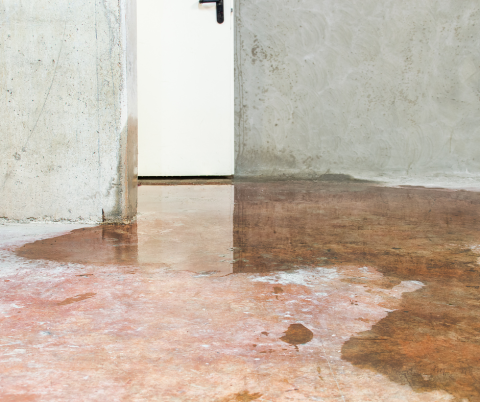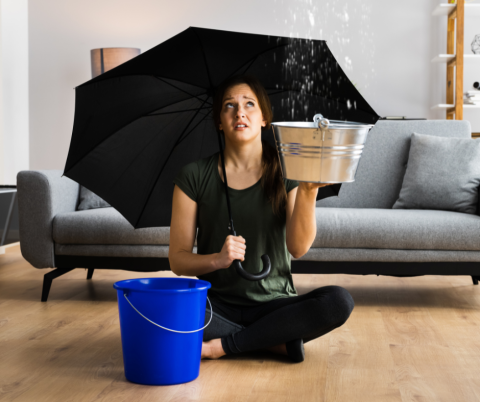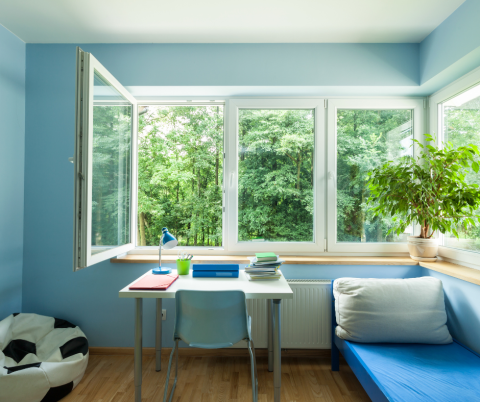
Spring is a season of renewal in Metro Atlanta—but it’s also a time when moisture can creep into your home, leading to mold growth and costly water damage.
Protecting your home from excess moisture is key to maintaining a safe, healthy, and structurally sound living space. In this guide, we’ll explore practical tips for basement waterproofing, leak detection, and improving ventilation to keep your home dry and damage-free this season.
Basement Waterproofing: Your First Line of Defense

Basements are particularly vulnerable to moisture intrusion, but with a few preventative steps, you can reduce the risk of water damage.
- Inspect Foundation Cracks – Even small cracks in your foundation can allow water to seep in. Seal them with waterproof epoxy or consult a professional for larger repairs.
- Check Your Sump Pump – Make sure your sump pump is working properly before heavy spring rains arrive. Test it by pouring water into the pit and confirming that it pumps out efficiently.
- Improve Drainage Around Your Home – Ensure that your downspouts direct water at least 5–10 feet away from your foundation. Adding soil around your home’s perimeter to slope away from the house can also prevent water accumulation.
- Consider a Dehumidifier – Keeping your basement’s humidity levels below 50% can prevent mold growth. A dehumidifier can help regulate moisture levels, especially in naturally damp areas.
Detect and Fix Leaks Before They Become Costly

Hidden leaks can lead to structural damage, mold growth, and skyrocketing water bills. Here’s how to catch them early:
- Inspect Your Roof & Gutters – Loose shingles or clogged gutters can allow water to seep into your home. Clean your gutters and ensure downspouts direct water away from the foundation.
- Check Under Sinks & Appliances – Regularly inspect pipes under sinks, behind washing machines, dishwashers, and water heaters for any signs of drips or pooling water.
- Look for Water Stains & Peeling Paint – Discoloration on ceilings or walls often indicates a hidden leak. Address these signs immediately to prevent further damage.
- Fix Plumbing Leaks ASAP – Even a slow drip can lead to significant moisture problems. If you notice a leak, tighten connections, replace worn-out washers, or call a professional plumber for larger issues.
Maintain Proper Ventilation to Keep Moisture at Bay

Poor airflow can trap humidity inside your home, creating the perfect conditions for mold. Here’s how to improve ventilation:
- Use Exhaust Fans – Always turn on bathroom and kitchen exhaust fans when cooking or showering to remove excess moisture from the air.
- Open Windows When Possible – On dry, breezy days, open windows to allow fresh air to circulate and reduce humidity levels.
- Wipe Down Wet Surfaces – After showers, wipe down bathroom walls and glass doors to prevent mold buildup.
- Don’t Block Air Vents – Ensure furniture or curtains aren’t obstructing vents to allow for proper air circulation throughout your home.
Final Thoughts: A Dry Home Is a Healthy Home
By taking proactive steps to waterproof your basement, fix leaks, and improve ventilation, you can protect your home from costly water damage and prevent the health risks associated with mold growth. Regular maintenance is key to keeping moisture out and ensuring a safe, comfortable living environment for you and your family.
Need a Home Inspection?
If you’re concerned about moisture issues, a professional home inspection can help identify problem areas before they turn into expensive repairs. Contact AmeriSpec of Loganville today at 770-935-4990 or visit our website HERE, to schedule an inspection and keep your home in top shape this spring!